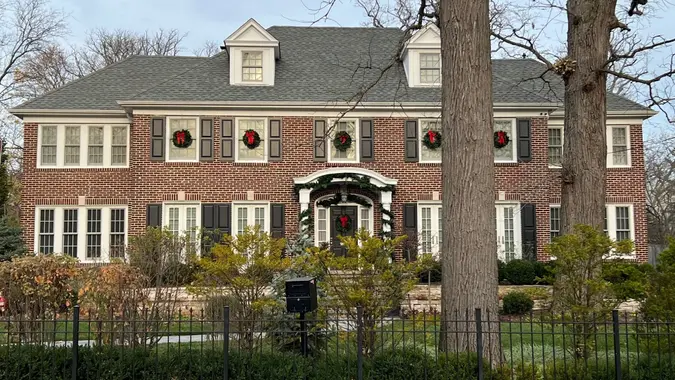How Middle-Class Income in 1980 Compares to 2025

Commitment to Our Readers
GOBankingRates' editorial team is committed to bringing you unbiased reviews and information. We use data-driven methodologies to evaluate financial products and services - our reviews and ratings are not influenced by advertisers. You can read more about our editorial guidelines and our products and services review methodology.

20 Years
Helping You Live Richer

Reviewed
by Experts

Trusted by
Millions of Readers
In 1980 middle-class families lived in a world of Atari consoles, rotary phones and station wagons with wood paneling. The median U.S. household income was $21,020, enough to buy a modest home, a reliable car and take a family vacation without much debt.
According to Pew Research Center, the middle class includes households earning two-thirds to twice the national median income. By that measure, being middle class in 1980 meant earning roughly $14,000 to $42,000.
Today, with the median income near $80,610, the same comfort costs far more. The numbers have grown, but the security they once provided hasn’t kept up.
Here’s how middle-class income in 1980 compares to 2025.
Salary
In 1980, a steady middle-class job, such as a teacher, office manager or skilled trades worker, typically paid about $6 to $8 an hour, or roughly $13,000 to $16,000 a year, according to Bureau of Labor Statistics data. That income could comfortably support a household on one paycheck.
Today, the average full-time worker earns about $68,000 a year. Yet, the cost of housing, healthcare and essentials have grown much faster than wages. Even with larger paychecks, many families now need two incomes to match the lifestyle one provided in 1980.
Housing Costs
In 1980, the median home price in the U.S. was about $64,600, according to the U.S. Department of Housing and Urban Development. With mortgage rates around 13.8%, buyers paid more interest, but home prices were still only about three times the median household income.
By 2025, that balance has flipped. The median home price now hovers around $410,000, nearly five times the typical income. Even with lower interest rates, affordability has eroded, forcing many middle-class buyers to stretch budgets or delay homeownership entirely.
Cost of Living
In 1980, a loaf of bread cost about 50 cents and a gallon of gas averaged $1.19, according to federal data. Those prices fit neatly within a single paycheck, leaving room for savings and extras.
By 2025, the average loaf of bread costs around $1.87 and gas hovers near $3.05 a gallon. Even though incomes have grown, the cost of daily essentials has climbed faster, shrinking what middle-class families can comfortably afford.
Cars
In 1980, the average new car cost about $7,557, roughly one-third of the median household income, according to federal data. Families often bought American sedans or wagons and paid them off within a few years.
Today, the average new vehicle costs more than $47,000, or well over half of the typical household income. Even as fuel efficiency improved, prices and loan terms soared, making car ownership a far bigger financial commitment than it was a generation ago.
Lifestyle
In 1980, middle-class comfort meant owning a color TV, a microwave and taking a yearly family vacation. Those luxuries still fit within one paycheck. VCRs and cordless phones were new status symbols, and most families ate dinner at home or splurged on fast food.
Today, streaming services, smartphones and air travel are standard, but they come with subscription fees, and rising costs. What once felt like modest comfort now requires more income, more work hours and often more debt. Convenience has replaced stability as the hallmark of middle-class life.
The Bottom Line
Middle-class life hasn’t disappeared; it’s just more expensive to maintain. The salary that once supported a home, a car and a family vacation now struggles to cover the same essentials. Federal data shows that while incomes have risen since 1980, inflation and lifestyle costs have climbed even faster.
For today’s middle-class families, the challenge isn’t about chasing luxury; it’s about reclaiming balance. Understanding how the numbers changed over time helps families plan smarter for the kind of stability that once came standard.
More From GOBankingRates
 Written by
Written by  Edited by
Edited by 

























